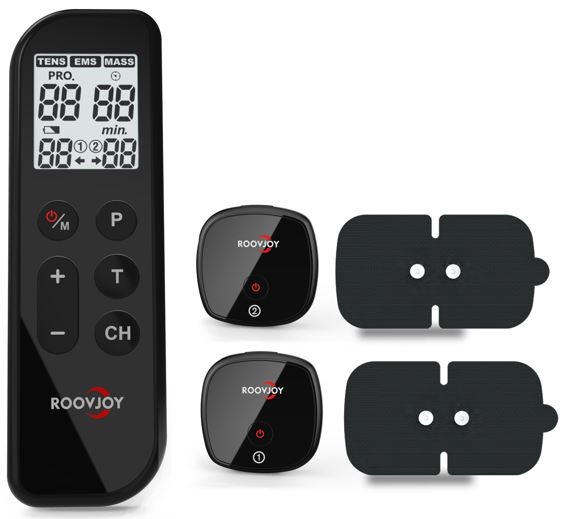
What is TENS?Transcutaneous Electrical Nerve Stimulation (TENS) is a non-invasive technique that uses electrical impulses to reduce pain.The system consists of electrodes placed on the skin, applying electrical stimulation to nerves in the painful area.This stimulation can be set at different frequencies and intensities, depending on the user's needs.How it works.TENS works according to several mechanisms to relieve pain. First, it activates the so-called “gate control theory” of pain. By applying mild electrical stimulation, the passage of pain signals to the brain is blocked and/or reduced.In addition, TENS stimulates the release of endorphins, the body's natural painkillers, which help reduce pain and promote a sense of well-being.
Applications of TENSTENS is used for a wide range of conditions, including:
Chronic Pain: People with conditions such as fibromyalgia, arthritis, back pain and neuropathy often find relief through regular use of TENS. Acute Pain: After surgeries or injuries, TENS can be used as supplemental pain relief to reduce the need for opioids. Sports injuries: TENS can help reduce pain and speed recovery from sports injuries such as sprains, muscle pain and tendinitis. Menstrual pain: For women suffering from severe menstrual pain, TENS can be an effective and drug-free option to relieve pain.Benefits of TENS
Non-invasive: TENS is a non-surgical and non-medicated approach to pain management, meaning the risk of side effects is minimalCustomized: TENS devices can be customized to the user's needs, with different programs and settings to achieve the best results Drug-free: At a time when the opioid crisis is receiving worldwide attention, TENS offers a valuable alternative for pain management without the risk of addiction or side effects from medication. Easy to use: TENS devices are portable and easy to use, putting patients in control of their pain relief, even in their daily lives.What is EMS?
Transcutaneous Electrical Muscle Stimulation (TENS / EMS) is a form of electrotherapy that uses electrical impulses to stimulate muscles.Not only is it an advanced method of exercising muscles, but it also offers significant benefits for recovery and performance enhancement.It is performed using electrodes placed on the skin, which send electrical currents to the muscles.These currents initiate natural contractions of muscles; muscle contractions.
How EMS works.
Muscle stimulation works by activating motor nerves, which in turn stimulate muscles to contract.This stimulation allows muscles to be activated without any conscious effort on the part of the person.This makes TENS / EMS particularly suitable for both muscle strengthening and rehabilitation, as it can activate muscles that are not otherwise used or are too weak to function normally.
Applications of Muscle Stimulation (EMS).
Muscle building and strengthening: muscle stimulation can be used to supplement traditional strength training to activate additional muscle fibers and stimulate muscle growth. Rehabilitation: For people recovering from injury or surgery, TES can help preserve and strengthen muscles without putting excessive strain on damaged tissue. Pain relief: muscle stimulation can also be used to reduce pain by stimulating the release of endorphins, the body's natural painkillers. Improving blood flow: By stimulating the muscles, muscle stimulation can help improve blood circulation, which in turn can contribute to faster recovery and better overall health.Benefits of EMS Muscle Stimulation.
Efficiency: muscle stimulation can be performed in short sessions and can be effective at activating a large number of muscles at once, making it an efficient training method. Safety: muscle stimulation is generally safe and non-invasive, with minimal side effects when used correctly. Easy to use: muscle stimulation devices are often portable and easy to operate, allowing users to use them at home. Customized: muscle stimulation can be tailored to the user's individual needs and goals, with different settings and programs to choose from